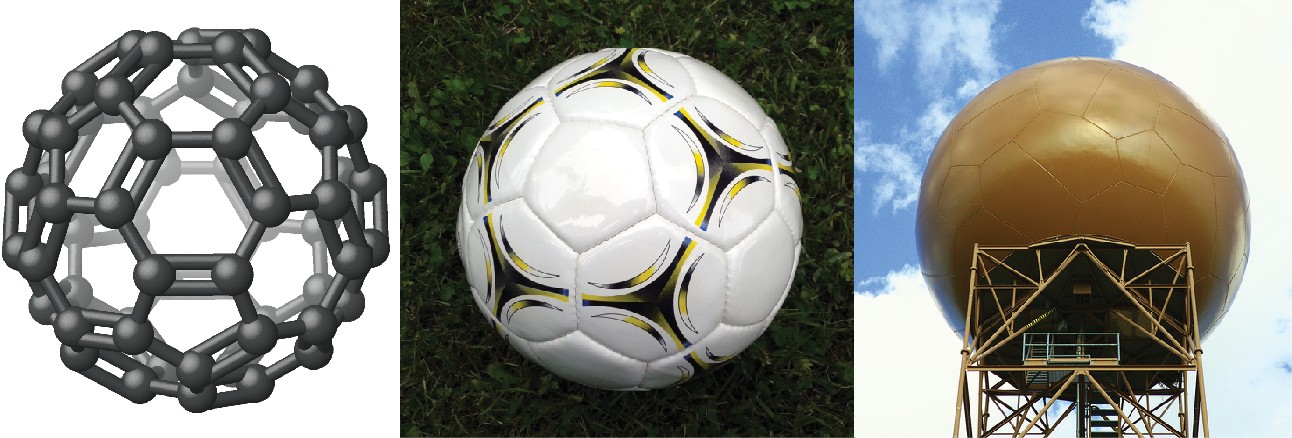Module 4: Chapter 4 Chemical Bonding and Molecular Geometry
Section outline
-

Figure 4.1 Nicknamed “buckyballs,” buckminsterfullerene molecules (C60) contain only carbon atoms (left) arranged to form a geometric framework of hexagons and pentagons, similar to the pattern on a soccer ball (center). This molecular structure is named after architect R. Buckminster Fuller, whose innovative designs combined simple geometric shapes to create large, strong structures such as this weather radar dome near Tucson, Arizona (right). By: Rice University Openstax CC BY NC SAChapter Outline
- Ionic Bonding
- Covalent Bonding
- Chemical Nomenclature
- Lewis Symbols and Structures
- Formal Charges and Resonance
- Molecular Structure and Polarity
Upon completion of this module, you will be able to:
Ionic Bonding (4.1)- Explain the formation of cations, anions, and ionic compounds (CLO1)
- Predict the charge of common metallic and nonmetallic elements, and write their electron configurations (CLO2)
Covalent Bonding (4.2)
- Describe the formation of covalent bonds (CLO1)
- Define electronegativity and assess the polarity of covalent bonds (CLO1)
Chemical Nomenclature (4.3)
- Derive names for common types of inorganic compounds using a systematic approach (CLO1)
Lewis Symbols and Structure (4.4)
- Write Lewis symbols for neutral atoms and ions (CLO2)
- Draw Lewis structures depicting the bonding in simple molecules (CLO2)
Formal Charges and Resonance (4.5)- Compute formal charges for atoms in any Lewis structure (CLO2)
- Use formal charges to identify the most reasonable Lewis structure for a given molecule (CLO1)(CLO3)
- Explain the concept of resonance and draw Lewis structures representing resonance forms for a given molecule (CLO1)
Molecular Structure and Polarity (4.6)
- Predict the structures of small molecules using valence shell electron pair repulsion (VSEPR) theory (CLO2)
- Explain the concepts of polar covalent bonds and molecular polarity (CLO1)
- Assess the polarity of a molecule based on its bonding and structure (CLO2)
To achieve these objectives:
- Read and view the Module 4: Chapter 4: Chemical Bonding and Molecular Geometry in Moodle
- Read Chapter 4: Chemical Bonding and Molecular Geometry in the OpenStax Chemistry: Atoms First 2e Pressbook
- Complete the Module 4: Chapter 4: Chemical Bonding and Molecular Geometry Assignment
- Complete the Module 4: Chapter 4: Chemical Bonding and Molecular Geometry Discussion
- Complete the Module 4: Lab 4: Video (VWS) Assignment - Drawing Lewis Diagrams
- Complete the Module 4: Lab 4: Experiment- Molecular Geometry and Polarity
- Complete the Module 4: Lab 4: Report Assignment- Molecular Geometry and Polarity
Note the checkboxes to the right that help you track your progress: some are automatic, and some are manual.
Module Pressbooks Resources and Activities
You will find the following resources and activities in this module at the Pressbooks website. Click on the links below to access or complete each item.
Background Colour
Font Face
Font Kerning
Font Size
Image Visibility
Letter Spacing
Line Height
Link Highlight
Text Colour
